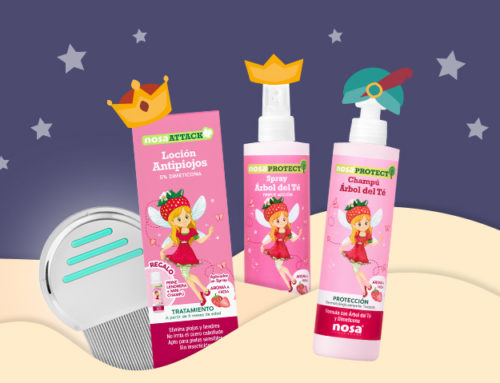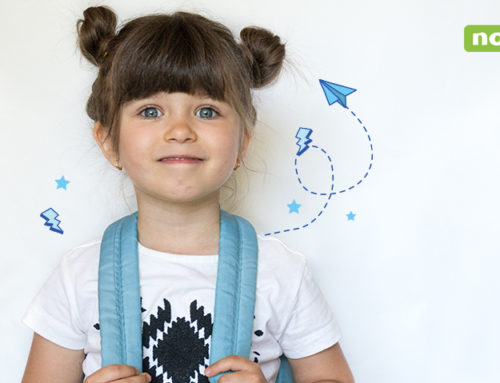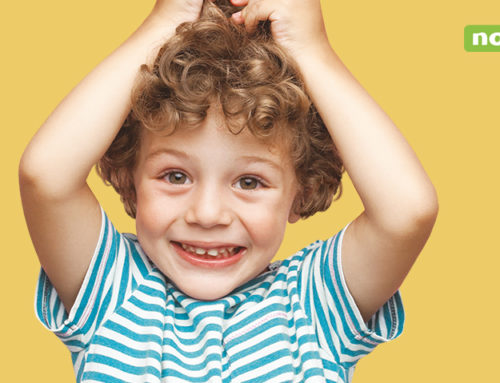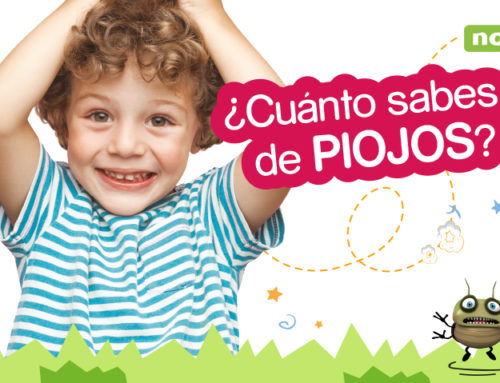Lice can roam freely on your children's heads 365 days a year. During the school year live and move from head to head. And the females lay 3 to 4 eggs per day, sowing with nits all the hairs near the nape of the neck and behind the ears, but when is it lice season?
And although we cannot confine lice to a few months of the year, it is true that there are times when head lice are most active. Females lay more eggs; these hatch and the nymphs grow more easily. This is what we could call the 'lice season'.
The lice season starts in summer
The golden age for the growth of the Pediculus humanus capitis is during the summer. The warmth of these months is a favourite with lice, mosquitoes and many other insects. That's why it's important to take measures to keep them at bay.
According to research, heat makes it easier for nits to open up. And even though the kids are out of school, there are other places where they can also get head lice.
A sandy space, for example, is conducive to infestation. Sand allows nits to continue their incubation for up to 15 hours after they have been removed from the hair.
Swimming pool or sea water is not a problem. Lice do not swim although they can survive in chlorinated water for about 24 hours.. The louse in water remains immobile (clinging to the hair) because it cannot swim. And it is unlikely to break off unless it dies. The six legs of the Pediculus humanus capitis are short but with a structure and articulations which make them function as perfect fastening hooks.
Places where children can get head lice
As we have mentioned in other articles, the louse does not jump and does not fly because it has no wings. Therefore, transmission occurs by direct contact between an infested person and another infested person.. This makes the following sites suitable for propagation:
-
- Playgrounds: where they all play together without restrictions and with excessive proximity between their heads.
-
- Summer camps: also because of games and sharing of beds, clothes, hats, combs and brushes that could carry the insect parasite.
-
- Beaches: because of the sand but mainly because of the shared use of towels to dry the body and hair.
-
- Swimming pools: more because of shared clothing than because of chlorinated water.
-
- Group activities with other children.
Anti-lice campaign in the summer!
During the summer, double the precaution. We recommend that you avoid head lice with our treatments of NOSA Healthcare.
Preventive measures can be applied to your children:
-
- Anti-lice shampoo: is a basic ally that should not be missing in any home with school-age children (from 4 to 14 years old are the most susceptible). Use anti-lice shampoo at least once a month as a preventive measure.
-
- Protective masks: work as a complement to shampoo. They nourish the hair. They make it silky and at the same time prevent lice.
-
- Lice repellent oilsThey usually contain tea tree oil or eucalyptus. These substances are of natural origin and keep lice away.
-
- Head lice repellent sprays and foamsare non-rinse products. They contain dimethicone, natural repellent oils and other active ingredients.
- Styling waxes: contain the same active substances as the sprays and are ideal for styling dry and unruly hair.
The best thing about these products if you buy them in NOSA, is that are formulated with principles of natural origin. We take special care to work with substances that are harmless to health. No insecticides or biocides.
At least once or twice a month, to check that everything is running smoothly, it is advisable to use the lendrera. The lice comb is a comb with very fine teeth designed to drag nits attached to the hair. Its use is essential if we want to get rid of lice or rule out an infestation.
And of course, never rule out that prevention measures also work for you and the rest of the adults in the home. Check your hair from time to time, lice can also be contracted by adults.
And it dispels the widespread myth that lice prefer dirty hair. This is a misperception that has stigmatised people with personal hygiene problems. Head lice prefer clean hair. This makes it easier for them to go to the scalp and feed four or five times a day. Think that if everything is clean, if there is no dandruff, no grease and dirt stuck to the skin, they will feed better.
In short: during the summer, beware of lice!
To find out more about how to prevent the spread of head lice. Visit our special section on prevention. 😉







Leave A Comment
You must be logged in to post a comment.